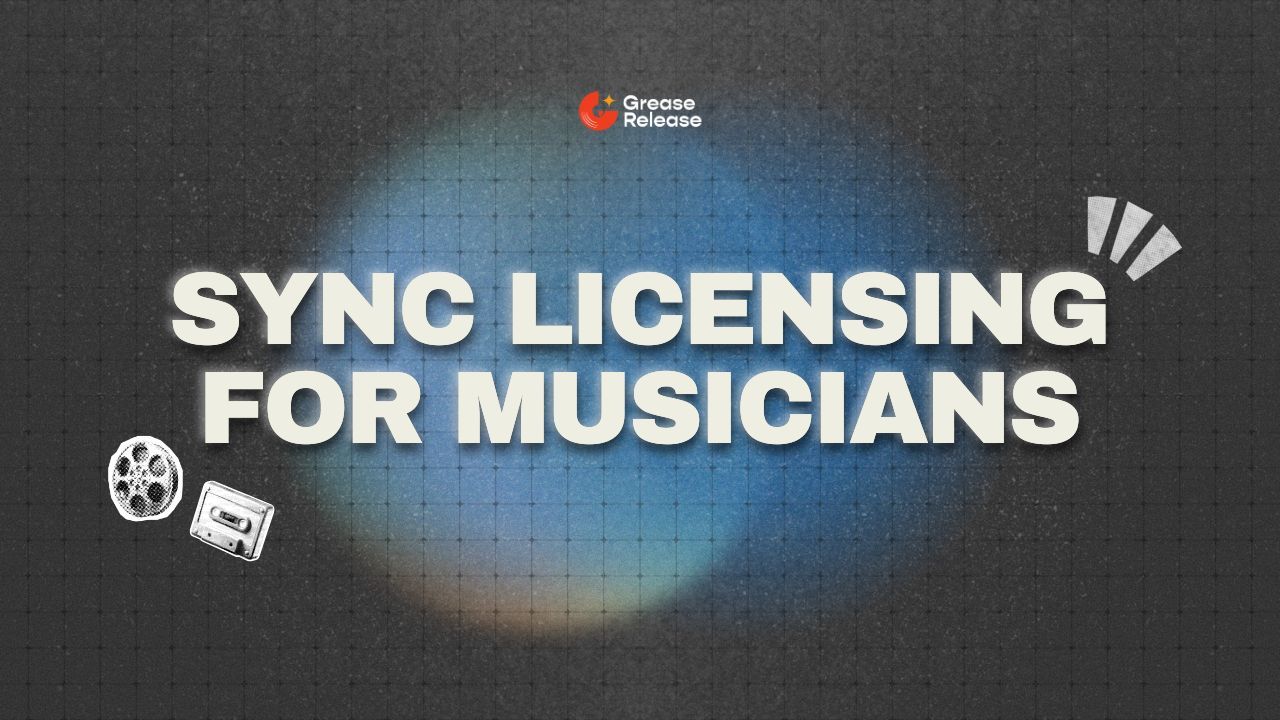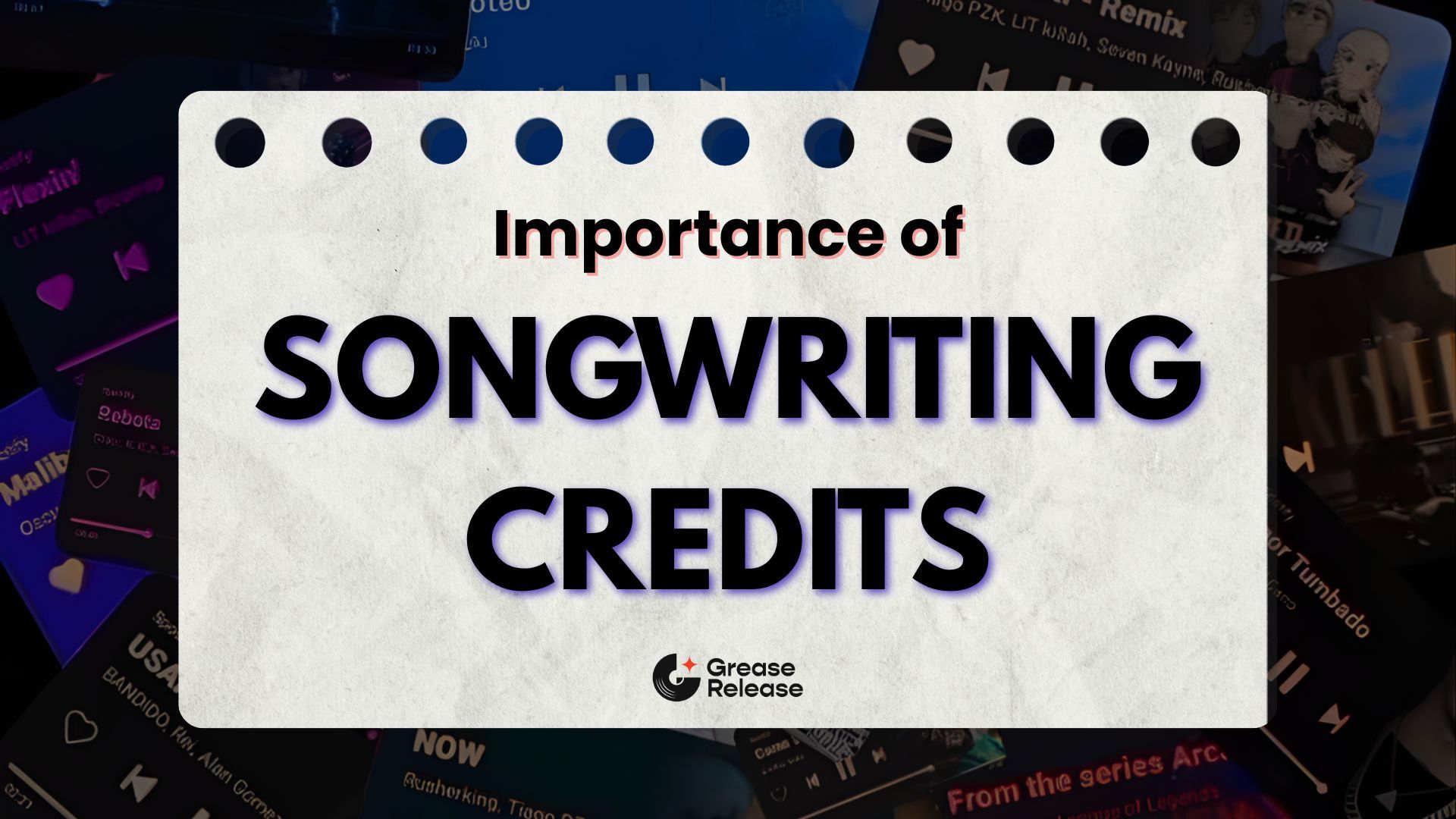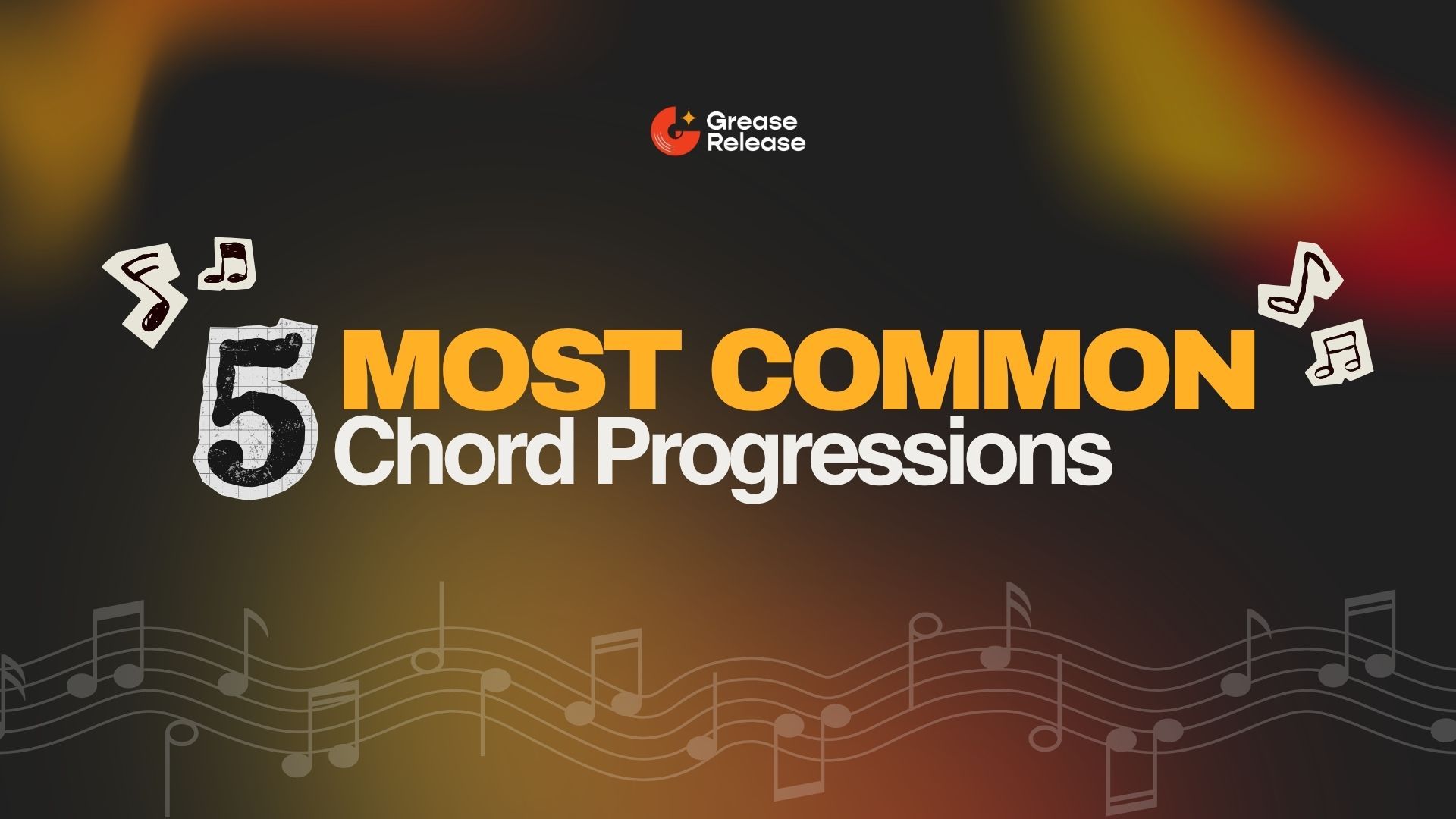
Spotify Playlisting 101
Jul 26, 2023Playlisting in Spotify: Everything You Need To Know!
Spotify Playlisting is everything now. Getting your track onto any of the popular playlists on Spotify, be it the editorial playlists of Spotify themselves or the playlists curated by independent curators; should be one of your top priorities since it can help gain better streaming on Spotify as well as increase your reach.

Playlists have the power to evoke a range of feelings and events. Imagine making a playlist, for instance, for a road trip with friends. You could call it 'On The Road', with a selection of contemporary singles including Shut Up and Dance by Walk the Moon, Born to be Wild by Steppenwolf, and other upbeat songs like Walking on Sunshine by Katrina and the Waves. As you begin your trip, this music will generate feelings of enthusiasm and thrill, and the songs on this playlist will always be a constant reminder of the fun you had on that particular trip. Has that ever happened to you?
But how does this whole thing work? Let’s dive in!
But before that, check out this Playlist Outreach Tracker. It's a simple tool we built to help you stay organized while pitching your music to curators. Whether you're reaching out through DMs or email, this tracker lets you log who you’ve pitched to, when you sent it, whether you heard back, and if you got added to the playlist, and more (in the detailed version)
You can duplicate the sheet for each song you're promoting, and keep all your outreach efforts tidy in one place.
Click here to make a copy and start using it
Doing Research
Look through Spotify to locate playlists that fit the style and tone of your track. If your song fits into the ‘chill and mellow’ category, for instance, look for playlists called ‘Chill Vibes’ or ‘Dinner Chill Music 2023’. Explore Spotify’s extensive playlist ecosystem first. Investigate various genres, tenors, and themes by using the search box. Keep an eye out for playlists with extensive following and regular updates. For instance, if you’re an electronic dance music (EDM) musician, look for playlists like ‘Electronic Hits 2023’ or ‘EDM Bangers’ that are exclusive to your genre. Consider their featured tracks and whether your music would fit in with them.
Investigate the playlists that contain tracks of musicians who are similar to you. You might have a greater likelihood of getting played on those playlists if your music fits in with theirs. Next research the playlisting submission rules. On their profiles or websites, some playlist curators specify particular submission rules. Verify if they accept track submissions, then adhere to their guidelines. For instance, someone might favor getting music via a specific platform or email. Some others would have made portals for their own company. Some like to take their submissions via third-party submission platforms such as Submithub.

Look into the ‘Discovered on’ sections on Spotify, for each artist. The ‘Discovered On’ section arranges playlists in order of popularity, with the most popular playlists listed first, based on their monthly listeners over a 28-day period. Every 28 days, the playlists in the ‘Discovered On’ section are re-evaluated, and a new ranking is generated based on the number of listeners during that interval. The ‘Discovered On’ section is crucial because it provides instant and accurate insights into the relative size of a playlist. It allows users to quickly understand the popularity and reach of a playlist within the artist's profile in relation to other playlists. Until recently, Spotify displayed the number of listeners each playlist had generated for an artist, allowing users to see the playlist's popularity. However, the listener counts are no longer visible to the general public. Although the playlists are still shown on the artist’s profile, the specific listener counts are no longer accessible. In the future, this information will only be available to the artists themselves and will no longer be shared publicly on the platform.
You can learn more about Spotify’s playlisting system and find the greatest prospects for your music by carrying out an in-depth study. Knowing your target playlists and curators will help you create tailored pitches, improving the chances of your track being featured and being heard by more people. You will find everything you mostly need to know when you learn about Spotify For Artists. We suggest you read our article Navigating Through Spotify: What is Spotify for Artists?
Pitching to Playlist Curators
Spotify For Artists provides an option for you, the musician, to submit your track to the editorial team of Spotify. Imagine you’re using this tool to submit indie pop music, and you describe the song’s nostalgic feel and how it fits the ‘Indie Pop Chillout’ playlist. Focus on your track’s quality, feel the flow of the playlist, and how your track will add to it. Additionally, look into websites like SubmitHub or Playlist Push to submit your tune to independent curators. Explain how your music fits with the vibe of each curator’s playlist in your pitch. When presenting your indie pop tune, for instance, to a curator known for featuring up-and-coming independent musicians, emphasize its distinctive qualities and its ability to resonate with their target demographic. Your pitch should be well drafted, should have a narrative, and be authentic - it should compel the curator to click on the link for your track and give it an honest listen. For more, read our article on Do(s) and Don’t(s) When Pitching Your Music to Curators.
Pssst…come here: Spotify is very interested in picking independent and upcoming artists as well. They have specially curated playlists like the Fresh Finds series, which features new music in a variety of genres like hip hop, indie, and Latin. Fresh Finds: The Wave, focuses on new R&B and soul, while Fresh Finds playlists are tailored and feature new music from a particular country.

Additionally, in your pitch, share any specific background information about yourself or unique messages about your music that you feel could resonate with the curator. People relate to tales, therefore a compelling story can help your pitch stand out. Include pertinent details about your song, such as its genre, release date, and a brief biography of the artist. To give your presentation additional weight, include any traction or great reviews your music has previously earned. Give a streaming URL to your track instead of attaching an attachment. Private SoundCloud links or other services like Bandcamp are frequently utilized for this. Make sure the link is simple to use and doesn’t require the curator to follow complicated instructions in order to listen.
To pitch a track to the Spotify editorial team, all you need to do is go to your Home tab on your account and if you’ve uploaded your music via a distributor, you should find the ‘pitch a song to our editors.’ option on your dashboard. Or, you could also head to the Music tab under Spotify For Artists Dashboard, click on ‘upcoming,’ and finally ‘pitch a song.’
Building relationships
On social media sites like Twitter, Instagram, or LinkedIn, engage with playlist curators. Keep up with them and comment on their blogs frequently. Comment thoughtfully on their playlists or the songs they play. Making a good first impression and being genuinely interested in their work will increase their openness to your music. Work together with and for other artists in your genre. Attend their gigs, spread their music, and show support. Creating a strong network can result in opportunities for cross-marketing and playlist placement. Attend conferences, events, and networking gatherings for the music industry. These occasions provide great chances to interact
in person with playlist editors, business leaders, and possible partners. Speaking of networking with playlisters, read our article on Find Spotify Playlist Curators: How to Get Placed on Spotify Playlists.
Pssst…come here: If someone is offering a placement in any editorial playlists of Spotify, for a fee, then it’s likely a scam. Spotify doesn’t charge a fee or have a system like this in place for placements. Also, never pay for guaranteed placements, it’s illegal and is called Payola.
Profile Verification
Along with proving your legitimacy, having a blue tick next to your name grants you access to a variety of metrics and fan observations, control over your artist profile, and the opportunity to pitch your songs directly to Spotify's editorial staff for a chance at playlist inclusion. To get your profile verified, you need to first claim your artist profile and promote your music as well. The ‘Get Verified’ button can be found on the Spotify for Artists dashboard once your artist profile has been claimed and all of your personal data has been filled out.

To begin the verification procedure, click on it. In order to confirm your status as an artist, Spotify will request certain information from you. A brief bio, links to your official social media pages, and any pertinent information that supports your credibility may be included. Verify your information once again, then send Spotify your request for verification for evaluation. Your request for verification will be reviewed by Spotify, and it can take some time for it to be approved. Wait for the confirmation email from Spotify with patience. For more, read our article on How to Update a Music Artist Profile.
Pssst…come here: Spotify says that the notes you leave in the submission form for your playlisting as well as the application for Spotify account verification matter. So make sure you don’t leave any section unattended.
The Power of Algorithmic Playlists
Being featured on Spotify’s algorithmic playlists can be a massive boost for artists. Consider that you’re a budding independent musician whose most recent single has begun to receive some attention. Each user has algorithmic playlists that are customized for them based on their listening preferences and they’re updated frequently. As a consequence, millions of new listeners who are interested in similar artists could give an ear to your music.
Pssst…come here: If you plan to release more than one song this month, bear in mind that only one song can be in Release Radar at a time.
‘Discover Weekly’ is one of the most well-liked algorithmic playlists. Every Monday, it updates and provides a curated list of 30 songs that Spotify thinks the user will like based on their listening habits. This playlist encourages musical exploration by exposing listeners to different artists, genres, and songs.
‘Daily Mixes’ are playlists that mash up a user’s preferred artists and songs with similar tunes they may not have heard before. These genre-based mixes are created for particular activities or moods.

Additionally, algorithmic playlists aid in the promotion of new musicians. The algorithms may suggest an artist’s songs in customized playlists if their music fits with the user’s listening preferences, increasing their visibility and possibly gaining them new followers. Users remain active on the platform because algorithmic playlists are successful at recommending pertinent material. Additionally, it promotes frequent visits from consumers so they may find fresh music and performers, which boosts user retention.
Pssst…come here: You can only pitch an unreleased track to Spotify editorial team for playlist consideration. Also, tracks, where you are the featured artist, cannot be pitched.
Also, there is something called collaborative playlists on Spotify as well. These are user-generated playlists that are made by more than one person. Friends, family, and anyone who has the invite to edit the playlist can add or remove tracks. The catch here is that if a user likes your track and adds to collaborative playlists, he or she will be giving your music exposure to anyone who has access to edit and stream the playlist. Speaking of the same, read our article on Making Collaborative Playlists 101.
Spotify announced that some playlists will be personalized more for each user. Every piece of music has a better chance of reaching the correct audience. Spotify discovered that some of their listeners were considerably more willing to listen for a longer period of time after testing this new technique with them. Additionally, these tailored editorial playlists boost the number of featured artists by 30% and the number of new songs that listeners find by 35%. An increase of 80% occurs in the number of listeners who seek out an artist on their own after first hearing his or her song on a customized editorial playlist. It's actually good news for musicians that the average number of times a listener saves a tune has increased by 66%. Don’t miss out on our article on How To Make The Most Of Spotify As a Musician.
Promo Cards is another feature that you could use. To engage with fans on social media and promote your inclusion in particular playlists, you can create personalized assets. These promotional cards’ size can be square, landscape, or portrait, and the background color can be changed to suit your aesthetic preferences.

PR and Social Media Marketing
Tell your story as an artist using your social media networks. Describe your musical inspiration, personal tales, and musical career trajectory. By using stories, you can humanize your brand and establish a stronger connection with your audience. Work together on cross-promotion with other musicians and playlist programmers. Share your respective playlists and music, expanding your reach and introducing new artists to your audience. Share the news with your followers on social media and mention @spotifyforartists so that Spotify can join in the celebration.
Pssst…come here: Don’t pick your brain about how long your track will stay in a playlist. This is dependent on a number of factors, including the playlist's audience, kind, frequency of updates, and song performance within the playlist. Some playlists, including #ThrowbackThursday and New Music Friday, are updated every week with an extensive selection of fresh material.
And that’s pretty much about it. At first, it may seem overwhelming, but once you shoot your shot and you get momentum going, your music will mark their places in Spotify playlists.
We at GreaseRelease, have a bunch of curators on our network who are looking for new & exciting music to push on their massive playlists. If you make music and want to reach a wider audience, check out our submission platform and get a chance to reach millions of listeners! Submit your tracks now!
Studies show that 80% of musicians constantly feel overwhelmed and we want to take that load off by helping you stay organized that's why, my team and I created the ProdPro 2.0
The ProdPro 2.0 is the ultimate organization tool built by and for musicians. Click here to learn more.
Don't miss my newsletter!
Join me on a music entrepreneurship journey with new tips and tricks delivered straight to your inbox.
We hate SPAM. We will never sell your information, for any reason.





